The Vulcania Posted by Geoff on Sep 17, 2013 in Italian Language
A few days ago Serena published an article about her Grandmother’s war diary, which you can read here. Reading about Vincenza’s journey from Berbera to Brindisi on the former luxury liner turned Red Cross rescue ship, I became curious as to the history of the Vulcania.
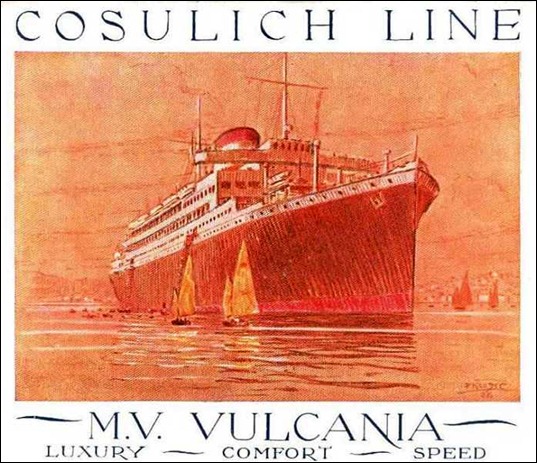 |
| A contemporary poster advertising the M.V. Vulcania |
During its fascinating ‘lifetime’, which spanned the Fascist era of the Twenties and Thirties, the Second World War, and the post war mass emigration of Italians to America, the ship served as a transatlantic liner, a troop ship, and a hospital ship.
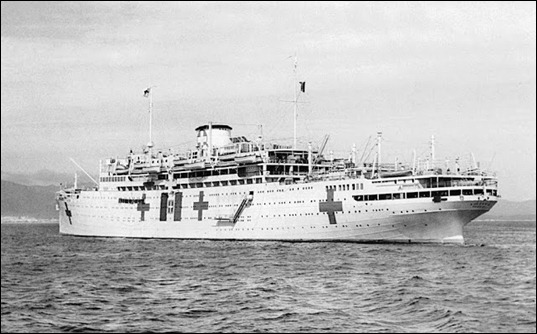 |
| The Vulcania in service as a hospital ship during WWII |
I imagined all the thousands of passengers that had travelled upon her in hope, joy, pain and fear from the days of her inaugural voyage in 1928 to her scrapping, which begun nearly five decades later in Taiwan on the 15th March 1975.
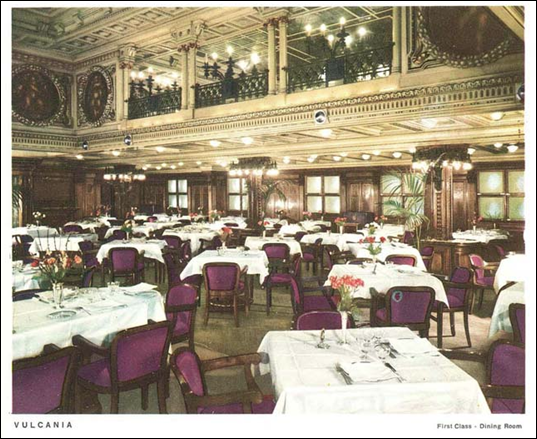 |
| The first class dining room |
I easily became side-tracked, whilst pursuing my internet research, into daydreams of another era. The photos, videos and publicity pertaining to the Vulcania are really evocative, and are rendered that much more pertinent by the knowledge that Serena’s grandmother once travelled upon her. Of particular interest is a video made during the Fascist era, demonstrating how the ship was ‘proudly’ refitted with Italian engines made by FIAT to replace the former ‘foreign’ engines.
Click on the photo below to watch the video. Underneath the photo you will find my transcription and translation of the soundtrack.
La grande motonave Vulcania rinnovata nei motori e negli allestimenti ha ripreso la navigazione transatlantica. Essa porta nei mari del mondo un nuovo primato della tecnica e del lavoro dell’Italia fascista. I motori FIAT, che sostituiscono quelli di marca estera che azionavano la motonave, sono fra i più grandi e potenti a combustione interna che siano oggi sul mare. Con i trentaseimila cavalli circa dei motori nazionali si raggiungono ora circa ventitré nodi all’ora contro i diciassette, diciotto, che ne sviluppavano i motori esteri, senza che il peso del macchinario risulti molto accresciuto. Grazie a quest’importante trasformazione il Vulcania è ora, per velocità utile, in linea con le più moderne unita delle flotte mercantili straniere.
The great Motor Liner Vulcania with renewed motors and fittings has recommenced its transatlantic crossings. This brings to the seas of the world a new supremacy of Italian Fascist skill and workmanship. The FIAT motors, that substitute the foreign ones that drove the ship, are amongst the biggest and most powerful internal combustion engines to be found on the sea today. With the roughly thirty six thousand horsepower of the National motors the ship now reaches a speed of twenty three knots an hour as opposed to the seventeen to eighteen that the foreign engines developed, with little increase in the weight of the machinery. Thanks to this important change the Vulcania is now, in terms of speed, in line with the most modern vessels of the foreign merchant fleet.
A few more photos that I couldn’t resist including (click on photos to enlarge them):
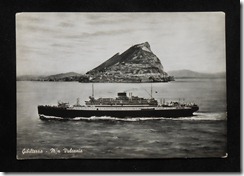 |
 |
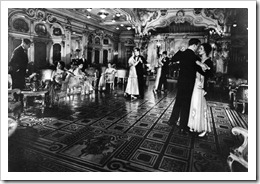 |
 |
More wonderful photos here: Wolfsonian Museum
A couple of other useful Links:

Build vocabulary, practice pronunciation, and more with Transparent Language Online. Available anytime, anywhere, on any device.



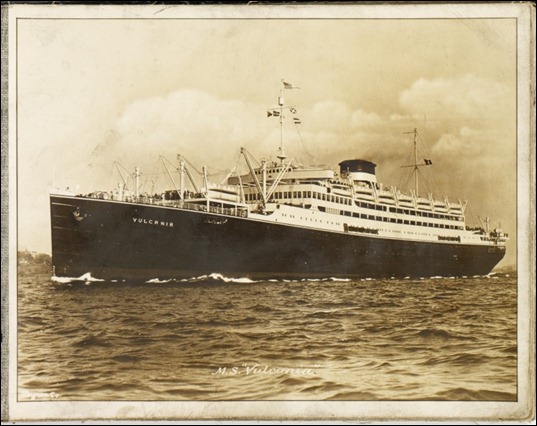

Comments:
Julien:
Dear Geoff,
Thanks for your blog. I’m a french writer. I work on a new graphic novel about a war bride (from my family) who went to USA 70 years ago with the Vulcania. I’m looking for informations about the Vulcania, and pictures of it in 1945 and 1946. . I saw the pictures of the ship “all white with red cross”. I suppose it was like this in 1946 ? Thanks for your help.
Julien
jfrey77@yahoo.fr